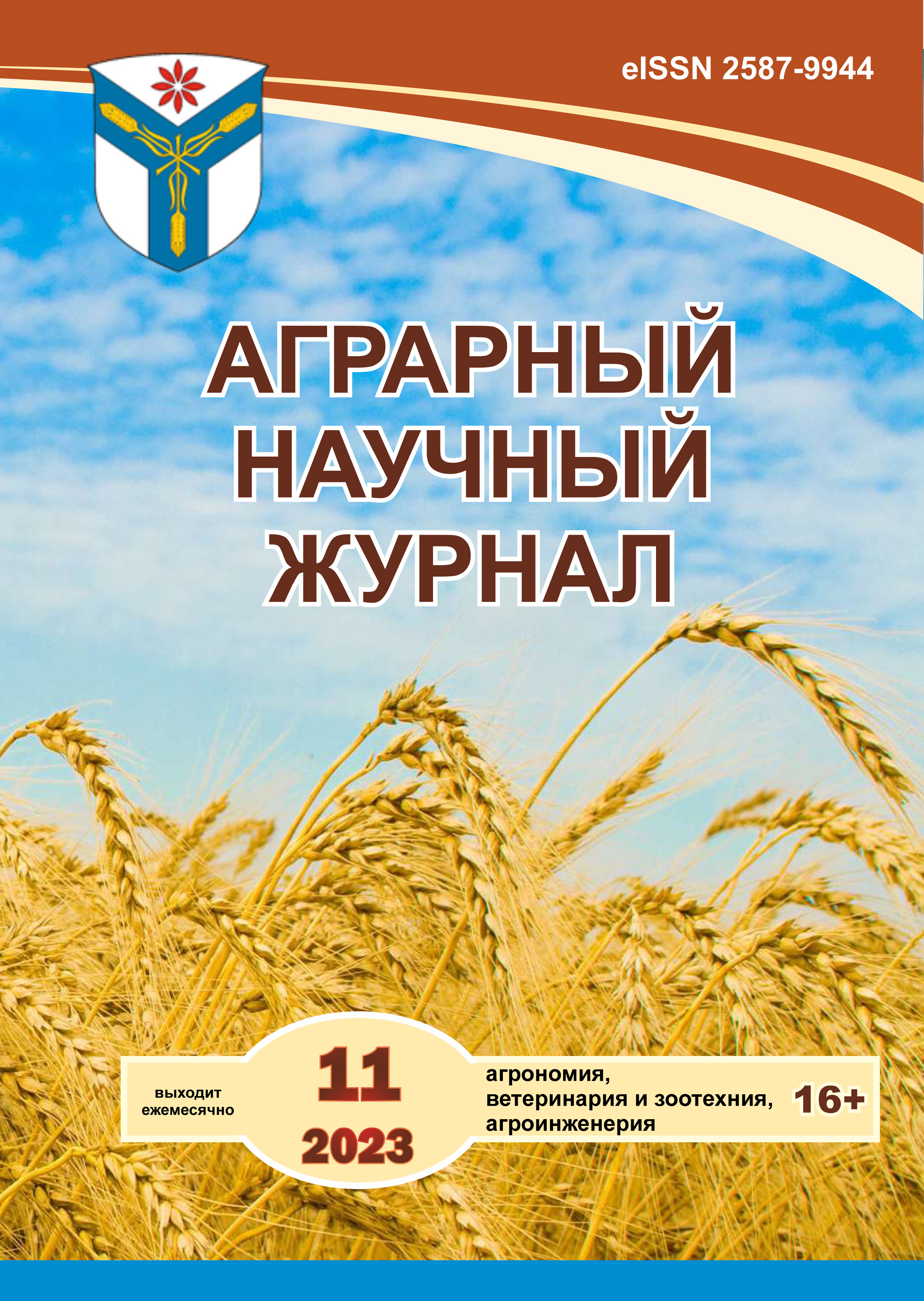Influence of seeding rates and fertilizer doses on the grain quality of spring soft wheat
DOI:
https://doi.org/10.28983/asj.y2023i11pp83-87Keywords:
grain quality, wheat, seeding rate, fertilizer dosesAbstract
The key problem in modern grain production is to improve the quality of grain grown. This problem is most acute in the production of wheat grain, as the main food crop of our country. In the conditions of the Voronezh region, field studies were conducted on the study of various seeding rates (2, 3, 4, 5, 6 million pieces of germinating seeds per 1 ha) and non-root fertilizing with nitrogen for the quality of wheat grain of the Buzzard variety. The results of the studies showed that the protein in wheat grain was formed with a small proportion of dependence on seeding rates and increased by 0.2?0.8% with an increase in the background of nitrogen mineral nutrition. Against the background of N30, a pattern was noted in increasing the gluten content with a decrease in the seeding rate. Against the background of nitrogen fertilizing (N45), the opposite effect is observed - with an increase in the seeding rate, the amount of gluten in the wheat grain increased. The quality of gluten of classes I and II was obtained from wheat grain on crops with a seeding rate of 2; 4; 6 million pieces/ha. The improvement in gluten quality depended to a greater extent on the increase in the background nitrogen nutrition on crops with seeding rates of 2 and 4 million pcs./ha, and in the variant with a seeding rate of 6 million/ha – on the background of N30. The nature of grain did not depend on seeding rates and nitrogen nutrition rates. The most responsive indicator to seeding rates and quality of fertilizers was the weight of 1000 seeds. With an increase in seeding rates, the weight of 1000 seeds decreased, and vice versa, with an improvement in nitrogen nutrition, it increased. The best quality grain was formed in the variant when sowing 6 million pieces/ha against the backdrop of fertilizing with nitrogen fertilizer N45.
Downloads
References
Алабушев А. В., Донцова А. А., Марченко Д. М. Проблемы производства качественного зерна пшеницы в России // Инновационные технологии в науке и образовании (ИТНО?2017): материалы V Междунар. науч.-практ. конф. Ростов н/Д., 2017. С. 357?362.
Алтухов А. И., Завалин А. А., Милащенко Н. З., Трушкин С. В. Проблема повышения качества пшеницы в стране требует комплексного решения // Вестник Курской государственной сельскохозяйственной академии. 2020. № 2. С. 32?39.
Богдевич И. М., Путятин Ю. В., Петрикевич О. М. Продуктивность и качество зерна сортов яровой пшеницы // Адаптивное растениеводство: проблемы и решения: материалы Междунар. науч.-практ. конф. Самохваловичи, 2004. С. 145?149.
Козлобаев В. В., Задорожная В. А., Облова Т. В., Валынкина К. В.Урожайность и качество зерна различных сортов мягкой яровой пшеницы // Роль аграрной науки в развитии АПК РФ: материалы Междунар. науч.-практ. конф., посвящ. 105-летию ФГБОУ ВО Воронежский ГАУ, Воронеж, 01–02 ноября 2017 года. Ч. II. Воронеж: Воронежский государственный аграрный университет, 2017. С. 181?184.
Малышева Е. В., Долгополова Н. В., Нагорных А. В. Влияние различных видов удобрений на биохимические показатели зерна // Вестник Курской государственной сельскохозяйственной академии. 2021. № 6. С. 35?40.
Мелешкина Е. П. Качество российского зерна пшеницы: динамика, особенности и проблемы // Современные методы, средства и нормативы в области оценки качества зерна и зернопродуктов: сб. материалов. Анапа, 2016. С. 4?9.
Мещерякова В. А., Кадыров С. В. Влияние азотных подкормок на фотосинтетическую активность растений, урожайность и качество зерна озимой пшеницы // Растениеводство: научные итоги и перспективы. Воронеж, , 2013. С. 96?100.
Милащенко Н. З., Самойлов Л. Н., Трушкин С. В. Проблемы интенсификации производства зерна пшеницы и их решение // Плодородие. 2018. № 2(101). С. 21?25.
Москвитина В. И., Васильева А. Э. Показатели качества зерна пшеницы // Горинские чтения. Инновационные решения для АПК: материалы Междунар. науч. конф. Т. 3. Майский, 2023. С. 353.
Доспехов Б. А. Методика полевого опыта. М., 1985. 351 с.
Основы научных исследований в растениеводстве и селекции / А. Ф. Дружкин [и др.]. Саратов, 2013. 264 с.
ГОСТ Р 54478-2011 Зерно. Методы определения количества и качества клейковины в пшенице. URL: https://docs.cntd.ru/document/1200087804.
Downloads
Published
Issue
Section
License
Copyright (c) 2023 The Agrarian Scientific Journal

This work is licensed under a Creative Commons Attribution-NonCommercial-NoDerivatives 4.0 International License.








